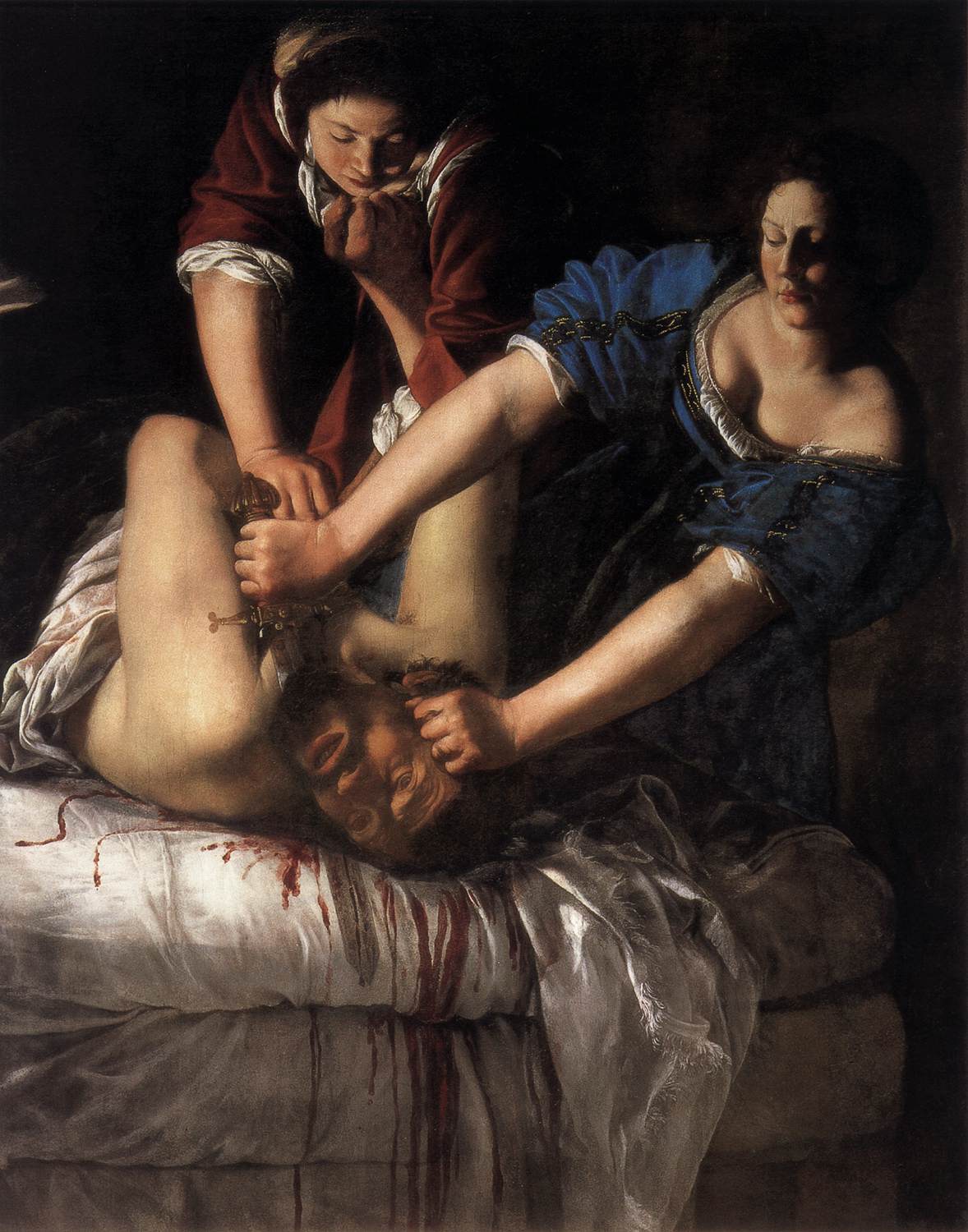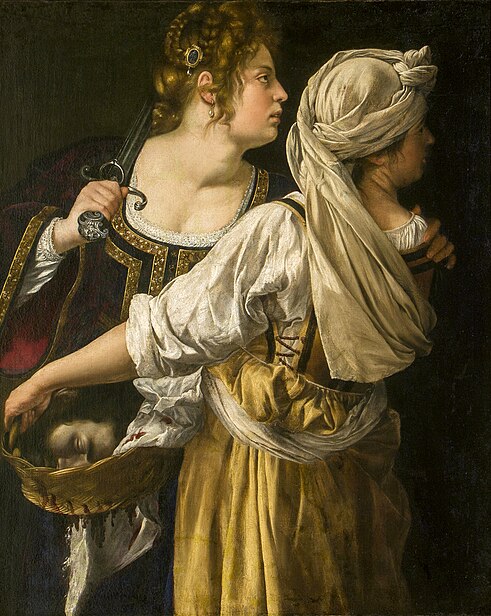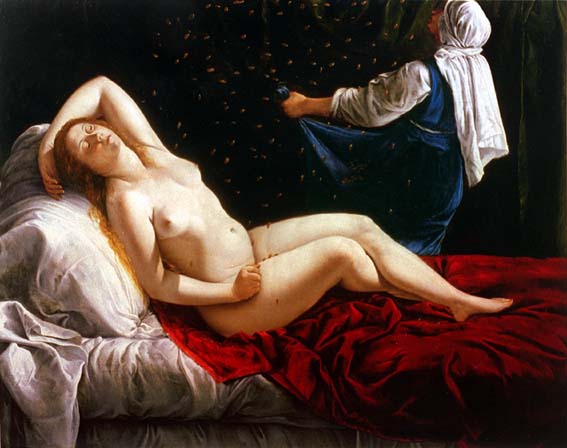Artemisia Gentileschi, female Baroque painter, was born on the 8th of July, 1593, the daughter of Orazio Gentileschi (another masterful painter). Whenever people discuss Artemisia, her work is almost always associated with painful events that occurred during her teens, which I will get to a bit later on.
But, first, here is a self-portrait from the lady herself:

One of the first Baroque artworks I was exposed to was the extremely graphic Judith Slaying Holofernes by Artemisia Gentileschi. I was in my Humanities course in college learning about the chiaroscuro technique and, aged 18, I had never seen anything like it before.

Such brutal violence just splatters off the page…

Obviously, the influence of Caravaggio upon Artemisia is great, and I urge you to have a look at his breathtaking works of art as well. Though her work had a tendency towards the more violent stories from the Bible, she also made tranquil, beautiful paintings, such as her vibrantly-coloured Venere Dormiente:

Saint Cecilia Playing a Lute:

Danae:

Clio, the Muse of History:

Bathsheba:

As I wanted to show some examples of her work before delving into her personal problems, now we can discuss them. Here is Artemisia’s Susanna and the Elders:
 As was mentioned earlier, Artemisia’s father, Orazio, was an accomplished painter. During one project, he hired another painter, Agostino Tassi, to assist him and also to tutor Artemisia’s burgeoning talent. Unfortunately, Tassi took the opportunity of his private time with Artemisia to repeatedly rape her over time – even getting another man to help him in his violations. Tassi was already married, and it eventually came to light that he might have also raped his sister-in-law and another woman.
As was mentioned earlier, Artemisia’s father, Orazio, was an accomplished painter. During one project, he hired another painter, Agostino Tassi, to assist him and also to tutor Artemisia’s burgeoning talent. Unfortunately, Tassi took the opportunity of his private time with Artemisia to repeatedly rape her over time – even getting another man to help him in his violations. Tassi was already married, and it eventually came to light that he might have also raped his sister-in-law and another woman.
Orazio pressed charges against Tassi, but the criminal justice system in the early Seventeenth Century Italian courts were very different from what they are today. In order to prove her story, Artemisia was subjected to a gynaecological examination and torture using thumbscrews. Tassi was found guilty and sentenced to a year in prison. Artemisia was married to another painter, Pierantonio Stiattesi.
The modern post-feminist theory about Artemisia is that her sufferings at the hands of her rapist formed the savagery in her paintings. I personally doubt this, because many paintings of Holofernes are exceedingly violent because it is a violent subject, and also she did not limit herself solely to images of women beheading men. The Early Modern period was very violent without a structured police force that you could call upon – it was a very different world in many respects.
Well, I hope you enjoyed some of these classic paintings – I really love how Artemisia took aspects of Caravaggio’s work and made them her own. She was a great painter, and on this day, her birthday, we remember her work and the lady who so skilfully wrought them.
Her remarkable story was the inspiration for several novels and a film, Artemisia:
Most of the images above were found on the Web Gallery of Art.
